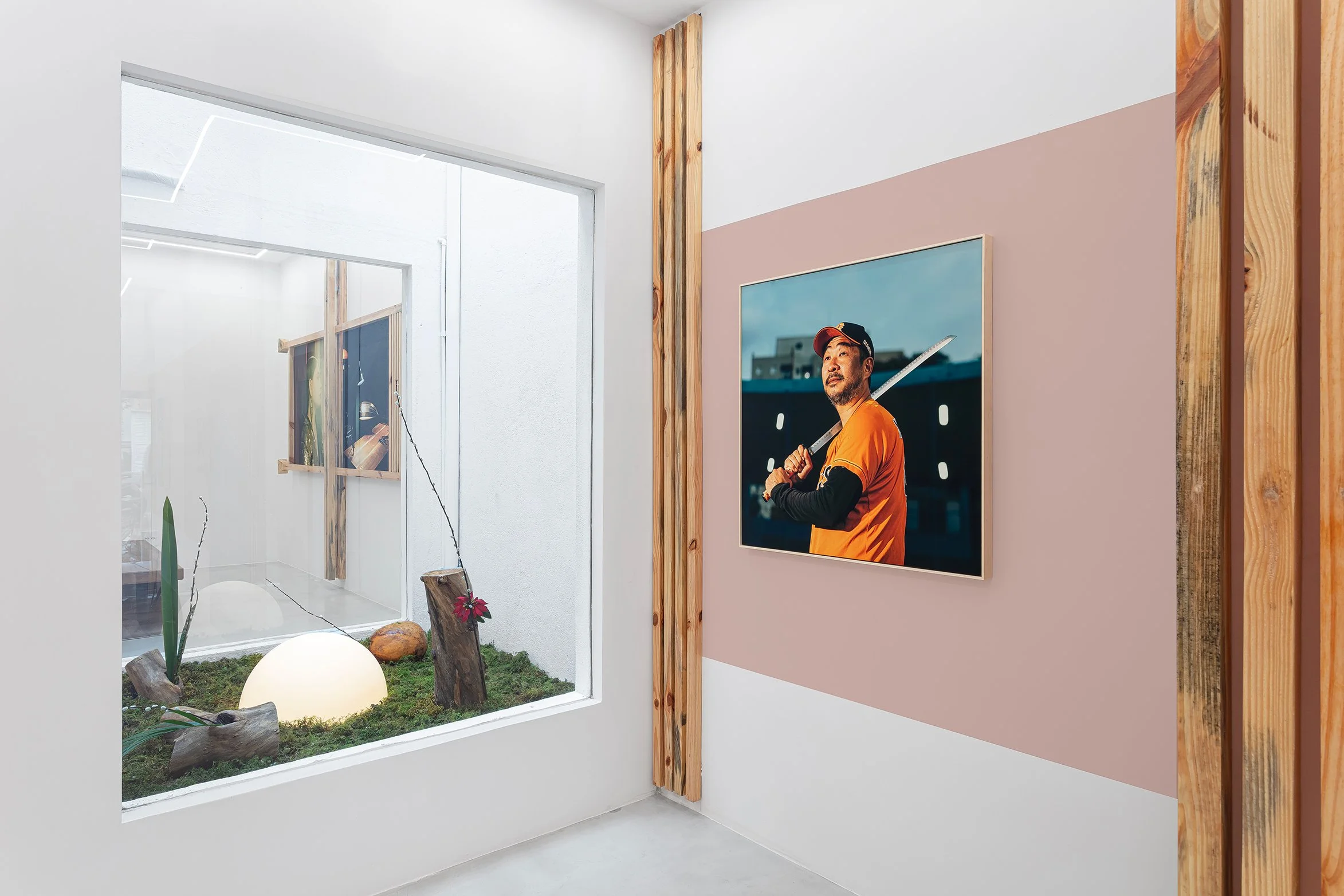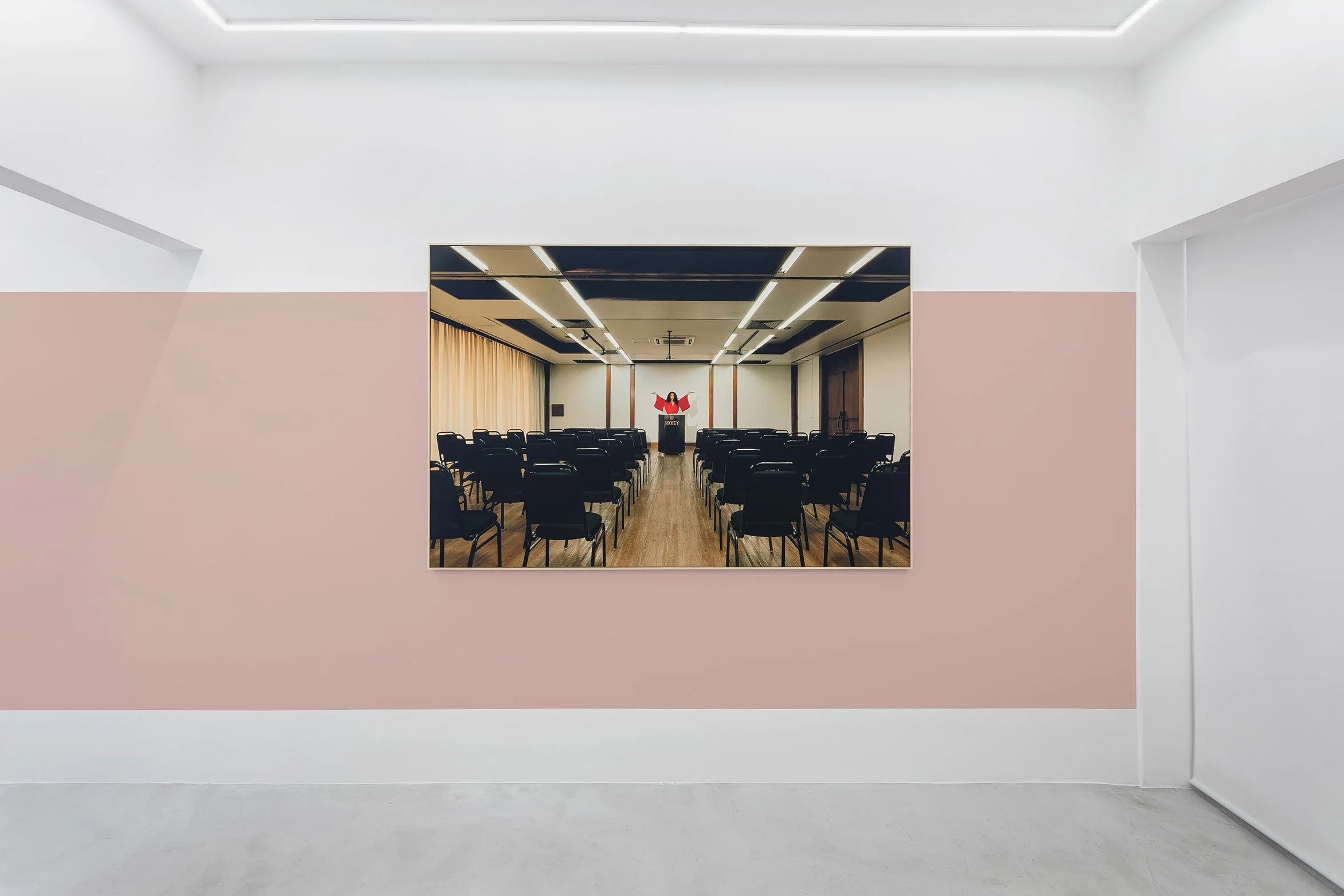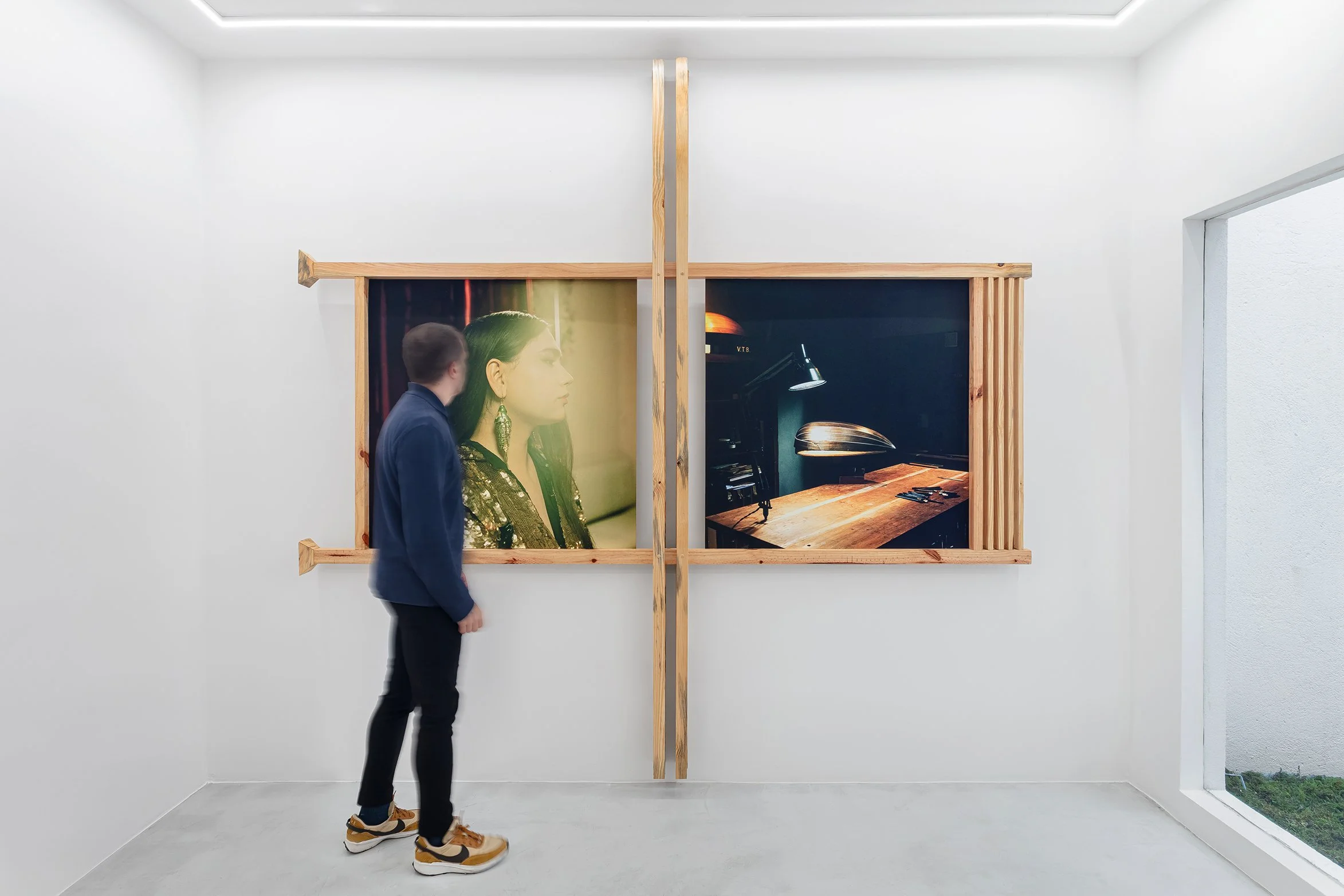Shin: Eu nunca fui para o Japão
Romy Pocztaruk
“The golden threads that adorn
the Noh theater costumes shimmer in the twilight (...)
Were it not for the shadows, there would be no beauty”
Junichiro Tanizaki (In Praise of Shadows)
The quality we call beauty grows through the realities of life. In Eastern culture, this statement is grounded in the reverence for the ancestors who, forced to dwell in darkness in many spheres, eventually discovered the beauty of shadows, which are also venerated in memory of those who reside in the heavens. In Western philosophy, however, heaven is the dwelling place of God and the righteous, associated with the divine and the order of perfection. The dichotomy of these foundations unfolds culturally in almost opposing visions of signs and symbols that shape our imagination of heaven and earth. The work of visual artist Romy Pocztaruk evokes the differences between these perspectives. It confronts stereotypes, the association of bodies and identities, with the idea of unchanging perfection. In doing so, it enriches paradise with mysterious fluidity, ethereal and filled with possibilities for the body and living, where shadow and light converge in the most beautiful human potential: the freedom of being. Queer thought and the breaking of normativities imposed by the Westernized belief in heaven is the guiding thread of Shin: I Have Never Been to Japan, in exhibition at Zielinsky.
Shin is the first of three segments in the series I Have Never Been to Japan, developed by Pocztaruk in regard to the land of the rising sun. It is one of the fundamental principles of ikebana, the traditional Japanese art of floral arrangements, which the artist studied and practiced throughout the project. In this art form, Shin represents the sky
and is considered the central stem, which concentrates and sustains everything. It is the first to be built in practice and symbolizes the celestial matrix force, followed by soe (man) and hikae (earth).
The exhibition Shin: I Have Never Been to Japan evolves in the divine confrontation between the possibilities of interpreting heaven. The 12 photographs gathered at Zielinsky address central issues related to the utopia of being through the confrontation between light and shadow. Without ever setting foot on the Japanese island, Pocztaruk's vision was mainly guided by fantasies related to Japan's cultural heritage in Brazil and the significant migratory flow that made Sao Paulo the city with the largest Japanese community outside of Japan. The series consists of scenes and characters created by the artist or in collaboration with actors, exploring temporal tensions and the synchronicity of moments, composed of present, past, and future. There are saunas, parks, museums, festivals, studios, and other spaces that evoke the juxtaposition between the ordinary/everyday and the imaginary. In Sauna Arrangement for a Party, vibrant- colored curtains installed in a sauna open the doors to the unknown and also to the exhibition that unfolds from it. Next to it is Shallow Water Dive, in which two female bodies float, suspended between worlds and surrounded by delicate tsurus, one of the oldest origami figures in Japanese culture, symbolizing the country’s sacred bird, a representation of divine protection.
The exhibition design developed by Pocztaruk gently guides us through the traditional Eastern universe, in harmony with "the silent architecture that lets the wind and sunlight speak for themselves," as well described by architect Tadao Ando about the identity of the Japanese home. Wooden frames, paying homage to Minka (traditional Japanese houses), lead us to reflect on the artist’s foreign gaze and the suspended temporality experienced by Japanese communities outside the island. In these scenes, queer men and women appear immersed in traditional and contemporary scenes, fluid between two worlds.
The breaking of gender norms imposed by the system is a theme that persists and has been developed in different strands and mediums throughout the artist's career. Her inquiries can be seen in various audiovisual productions in her trajectory, including Antes do Azul and Safira, both from 2019, among others. Paraphrasing writer Kenzaburo Oe, in the eternal escape from reality in which we live, a reality that often forces us to live appropriately, Shin moves us toward the skies we yearn for.
Ana Carolina Ralston
curator










